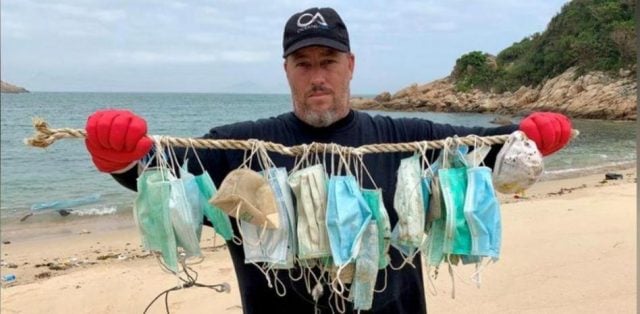The coronavirus pandemic has not only left more than 5 million people dead around the world, it has also had a negative impact on the environment, leaving millions of plastic waste that has ended up in the seas and is now a threat to biodiversity and to life.
Scientists from China and the US have calculated that the COVID-19 pandemic generated an extra 8.4 million tons of plastic waste, originating in the form of hospital supplies, protective items – such as masks, gloves and face shields – and purchases made over the Internet.
As they warn in their study, published by the Proceedings of the National Academy of Sciences, much of this material ended up in the sea and will end up reaching the beaches and coastal areas within a few years.
According to specialists from Nanjing University (China) and the Scripps Institute of Oceanography (US), this situation «poses a lasting problem for the ocean environment», which is why they call for «better management of medical waste in the epicenters of the pandemic, especially in developed countries”.
According to their calculations, last year about 1.56 billion masks ended up in the seas, which also increased the threats to animals, which eat or become trapped in the plastic.
Another element that generated excess plastic is the increase «at an unprecedented speed» in Internet sales, due to the packaging of the products. Their mismanagement caused a good part of them to end up in the rivers that flow into the ocean.
The plastic pandemic
To estimate the extra amount of plastic generated by the pandemic, the researchers took into account a variety of data, such as population statistics, mask production, coronavirus cases, tests, hospitalizations and the financial reports from leading companies in e-commerce, review RT.
In this way, they calculated that, by the end of August this year, 193 countries had generated some 8.4 million tons of plastic waste related to the pandemic. 87.4% of them were generated by hospitals, while personal protective equipment used by society represented 7.6% of the total and Internet purchases produced 4.7%. For their part, the test kits only derived 0.3% of the total waste.
In addition, they detailed that the continent that produced the most waste was Asia, with about 46%, followed by Europe (24%) and the American continent (22%).
«The biggest sources of excess waste were hospitals in areas that were already struggling with waste management before the pandemic», explains Amina Schartup, assistant professor at the Scripps Institute. «They just weren’t set up to handle a situation where you have more waste», she added.
In the midst of this panorama, specialists projected that by the end of this year, the excess of plastic waste generated will be 11 million tons, of which 34,000 tons will be washed by rivers into the ocean.
Danger to the Arctic
The specialists also investigated what the final destination of the plastic would be and pointed out that within three years most of it will end up on beaches and coastal areas.
In addition, they warned that a good part of them will reach the Arctic Ocean. «The Arctic ecosystem is considered particularly vulnerable due to the harsh environment and high sensitivity to climate change, which makes the potential ecological impact of exposure to accumulated Arctic plastics of particular concern», they conclude.











